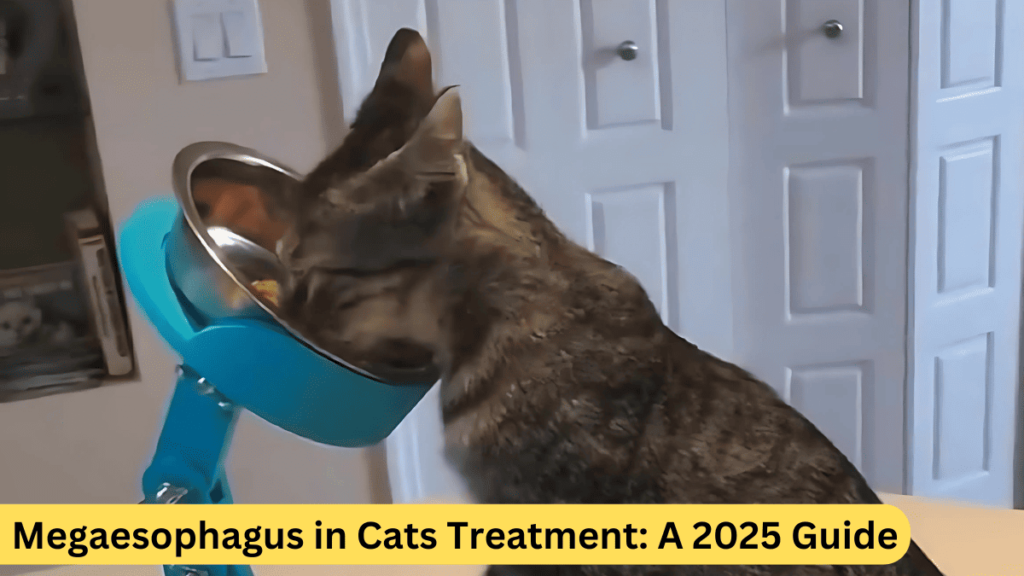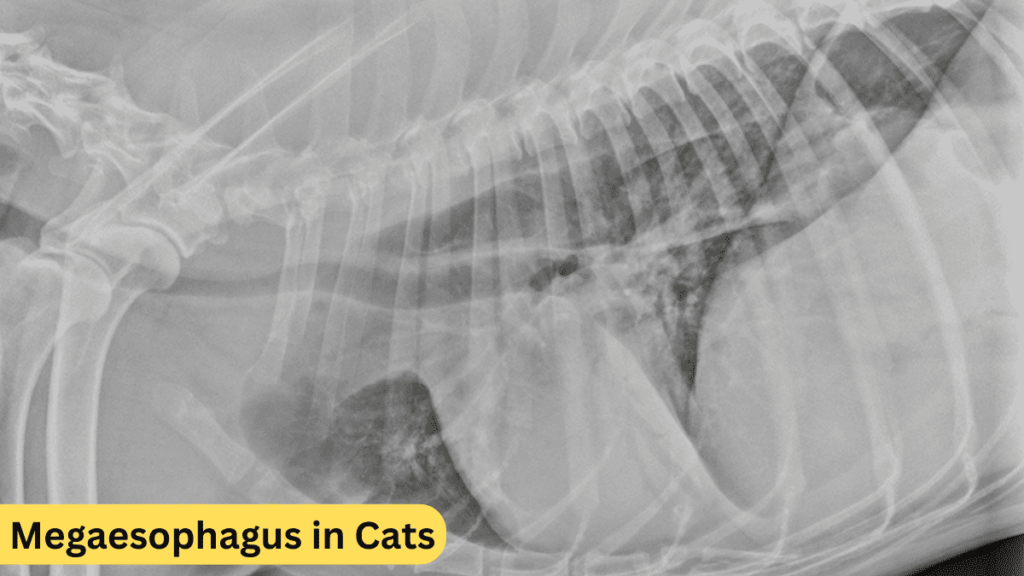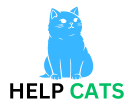
Megaesophagus in cats is a challenging condition that affects the esophagus’s ability to transport food to the stomach, often leading to regurgitation and malnutrition. For cat owners, understanding megaesophagus in cats treatment options is crucial to ensure their pet’s quality of life. This guide covers effective treatments, feeding techniques, and long-term care strategies to help manage megaesophagus and improve comfort and health for cats facing this condition.
Table of Contents
What is Megaesophagus in Cats?

Megaesophagus is a disorder where the esophagus, the muscular tube that connects the throat to the stomach, becomes enlarged and loses its ability to push food into the stomach through peristalsis (muscular contractions). Without these contractions, food accumulates in the esophagus, often resulting in regurgitation. This condition can lead to severe complications, such as aspiration pneumonia and malnutrition if left untreated.
Causes of Megaesophagus
The cause of megaesophagus in cats can be congenital or acquired:
- Congenital Megaesophagus: Present at birth, this form may be related to specific breed genetics or underlying developmental issues. Siamese and Abyssinian cats are at a higher risk.
- Acquired Megaesophagus: More common in adult cats, acquired megaesophagus can arise from various causes:
- Neurological disorders: Such as dysautonomia or myasthenia gravis
- Toxins: Exposure to certain toxins like lead or organophosphates
- Esophageal obstruction: From foreign objects, tumors, or strictures
- Inflammatory conditions: Such as esophagitis (inflammation of the esophagus)
Types of Megaesophagus in Cats
- Congenital: Cats are born with this form, often manifesting symptoms early in life.
- Acquired: Develops later due to another medical condition, commonly in young to middle-aged cats.
Symptoms of Megaesophagus
The symptoms of megaesophagus in cats include:
- Regurgitation: Unlike vomiting, regurgitation is passive, and undigested food may appear in a tubular shape.
- Difficulty Swallowing (Dysphagia): Struggling to swallow food or water.
- Weight Loss and Malnutrition: Due to insufficient food reaching the stomach.
- Coughing and Wheezing: May signal aspiration pneumonia, a common complication of megaesophagus.
- Increased Appetite: Some cats exhibit hunger but struggle to keep food down.
Read More:
Heart Murmur Treatment in Cats 2025
Diagnosis of Megaesophagus
Diagnosing megaesophagus involves a combination of clinical history, physical exams, and diagnostic testing. Common methods include:
- Radiography (X-rays): X-rays of the chest to observe esophageal dilation.
- Fluoroscopy: A moving X-ray that shows how food moves through the esophagus.
- Endoscopy: To visualize the esophagus directly and rule out obstructions or tumors.
- Blood Work and Tests: To identify underlying conditions, such as autoimmune diseases like myasthenia gravis.
Treatment Options for Megaesophagus in Cats
Medications
- Prokinetic Medications: Cisapride and metoclopramide are often prescribed to help stimulate the smooth muscles of the esophagus.
- Immunosuppressive Drugs: Used for underlying autoimmune diseases (e.g., myasthenia gravis).
- Antibiotics: To prevent or treat aspiration pneumonia, a common complication.
Surgical Options
While there is no direct surgical cure for megaesophagus, surgery may be required in cases involving:
- Esophageal Obstructions: Foreign objects, tumors, or strictures may need surgical removal.
- Feeding Tube Insertion: In severe cases, a feeding tube may be used temporarily to bypass the esophagus, ensuring adequate nutrition.
Dietary Management
Diet is crucial for managing megaesophagus:
- Consistency of Food: Some cats benefit from slurry-like food, while others do better with small kibble or soft, easily digestible food.
- Frequent, Small Meals: Reduces the amount of food the esophagus has to handle at once.
- Elevated Feeding Position: Using a Bailey chair or elevated bowls helps gravity move food into the stomach.
How to Feed a Cat with Megaesophagus
Feeding a cat with megaesophagus involves specific techniques to aid in digestion and prevent regurgitation:
| Feeding Method | Description |
|---|---|
| Bailey Chair | A chair that keeps the cat upright during feeding, using gravity to help food move downward. |
| Elevated Bowls | Bowls set at chest height can aid in food movement. |
| Blended Diet | Mixing food with water to create a slurry consistency helps with easier digestion. |
| Slow Feeding | Providing food in small portions across several meals to reduce strain on the esophagus. |
Prognosis and Long-Term Management
The prognosis for megaesophagus in cats varies depending on underlying factors and complications, like aspiration pneumonia. With proper management, many cats can lead relatively comfortable lives, although the condition generally requires lifelong care. Cats with congenital forms may experience fewer symptoms if managed from an early age.
Preventing Aspiration Pneumonia: The most critical aspect of long-term care is preventing aspiration pneumonia. This involves vigilant feeding practices, regular vet check-ups, and monitoring for signs of respiratory distress.
FAQs on Megaesophagus in Cats
Q1: Can megaesophagus in cats be cured?
No, megaesophagus is generally not curable. However, effective management strategies can help alleviate symptoms and improve quality of life.
Q2: Is there a genetic predisposition for megaesophagus in cats?
Yes, some breeds, like Siamese and Abyssinian cats, are more likely to develop the condition.
Q3: What should I do if my cat regurgitates frequently?
Contact your veterinarian promptly. Regurgitation can lead to dehydration, malnutrition, and aspiration pneumonia if not managed.
Q4: How can I prevent aspiration pneumonia in my cat?
Use elevated feeding methods, provide food in small, frequent meals, and consult your vet for specific dietary or medication recommendations.
Conclusion
Managing megaesophagus in cats requires a dedicated approach to feeding, regular veterinary care, and continuous monitoring for potential complications like aspiration pneumonia. While it can be challenging, many cat owners find that with the right tools, support, and treatment, their pets can still enjoy a comfortable and happy life.
If you suspect your cat might have megaesophagus, consult your veterinarian for a thorough evaluation. Early diagnosis and a personalized treatment plan can make a significant difference in managing this condition effectively.
